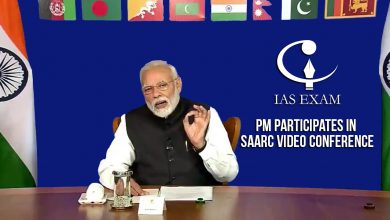Fight for the finite: On budgetary allocation for health
Health budgetary allocation must go up in India is to prepare for an unpredictable epidemic
It is an incontrovertible truth that material resources are finite. Demand in most sectors will continue to exceed supply in times of a pandemic. With the number of SARS-CoV-2 positive cases on the rise, and the number of deaths going up as well, the question is whether national and state health systems will be able to cope with ever-rising demands — for testing kits, for hospital beds, ventilators, why, even masks and hand sanitizers.
This extraordinary demand has traditional production and systems of delivery choking and most often, unable to match supply to demand. Health-care resources, limited to begin with, are even more so when under stress. At a time when the disease did not have a name, and much less by way of character, in mainland China, the rapidly climbing numbers went far beyond the capacity of the country’s renowned industry (where a hospital was built in record time), and the health systems struggled to cope.
Reports indicate that in Italy, which has emerged the hub of the epidemic outside of China, the strain on health systems is massive. With India crossing 100 positive cases, it is impossible to ignore the question about whether the health system is robust enough to meet this emergency. What is known, however, does not inspire confidence.
Need for an increase Health Budget
- For years, India’s health expenditure as a percentage of GDP has been abysmal at about 1%.
- As per the National Health Profile, 2019, collated by the Central Bureau of Health Intelligence unit of the Directorate General of Health Services, there has been no significant change in health-care expenditure since 2009-2010.
- The highest it has been in the decade is 1.28 % of the GDP, and hit the nadir at 0.98 % in 2014-2015. The report does record that per capita public expenditure on health in nominal terms went up from ₹621 in 2009-10 to ₹1,112 in 2015-16.
- A WHO bulletin of 2018 records that out-of-pocket payments remain common in India, which in 2014, was estimated at 62% of total health expenditure. While questioning whether these incremental efforts are sufficient, one needs to factor in the substantial skew in different States in terms of public sector health infrastructure and wherewithal. There is evidence to show that increased public spending on health care has resulted in less financial hardship for communities and better health outcomes.
- Prime Minister Narendra Modi made a promise to increase public health spending to 2.5 % of GDP by 2025. His government would do well to treat this epidemic as an opportunity to drastically scale up budgetary allocations for health to facilitate expansion of capacity. Epidemics are known to change the course of history.
In the face of the COVID-19 pandemic, India must steer its budgetary allocation on health so as to harness finite resources optimally for the benefit of all.
SOURCE: The Hindu





.png)



